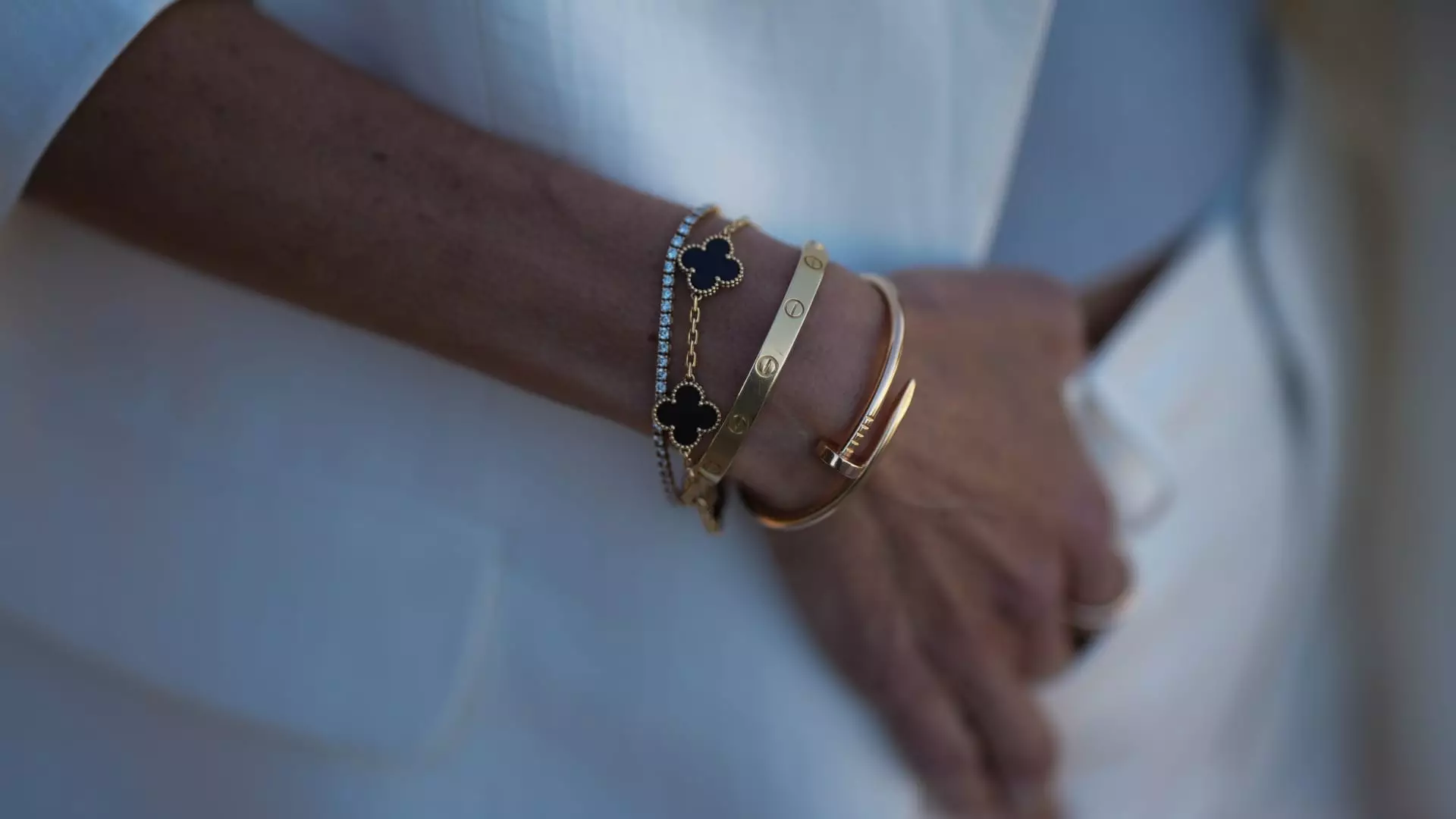Just months ago, industry optimists anticipated a robust rebound for luxury retail in 2025, fueled by a spirited holiday season and a sense of post-election euphoria. The narrative was simple: as the economy stabilizes and consumer confidence returns, so will the bubbly spend on high-end goods. Sadly, this rosy outlook crumbles under the weight of recent data, revealing a starkly different reality. Credit card spending on luxury items has not only stagnated but actually declined in the first half of the year. This disappointing trend signals that the middle ground of the consumer economy — often overlooked in sensational headlines — is fundamentally weakening, and the picture looks bleaker than many would admit.
The initial hope that luxury retail would experience an upturn proved overly optimistic. May’s figures showed a marginal 1.7% decline in spending compared to the same month in the previous year, a stark contrast to the double-digit drops seen earlier—6.8% in April and 8.5% in March. Such figures expose a fragile consumer environment where desire for luxury goods isn’t translating into consistent, durable spending. Even the so-called “top brands” like Hermès barely managed to eke out a slight 0.2% year-over-year growth, highlighting how subdued the overall market truly is.
Unequal Fortunes: Jewelry’s Flickering Bright Spot in a Dim Landscape
Amid the overall gloom, jewelry emerges as a rare beacon of resilience. Unlike handbags or ready-to-wear, jewelry has experienced consistent growth since late 2024, culminating with a remarkable 10.1% spike in spending in May. This discrepancy hints at a deeper shift in consumer behavior—one that favor emotional investment or perceived intrinsic value over mere aesthetic appeal. People are increasingly willing to spend more on jewelry, not just because it’s beautiful, but because it embodies a form of wealth preservation, sentimental remembrance, or even investment.
What’s fascinating is that jewelry is attracting new buyers while also satiating existing clientele. A subset of high-end brands may have lost some customers—2.7% in May—yet those remaining spent 11.7% more on average. This suggests a polarization of consumer engagement: the affluent are more selective, funneling their resources into pieces they find meaningful, rather than expanding their collections indiscriminately. The allure of jewelry as a store of value, especially amid rising gold prices, seems to be bolstering its status in the luxury hierarchy.
Yet, this trend also exposes a paradox. For all the seemingly bullish numbers in jewelry, the broader luxury market remains exposed to deeper vulnerabilities. The perception that jewelry can serve as an “investment” is supported by rising precious metals prices—gold, in particular—making jewelry purchases appear more justifiable in economic terms. But the underlying economic fragility remains: this resilience is less a sign of sustainable growth and more a reflection of shifting priorities in uncertain times.
The Disillusionment in Handbags and Watches: Echoes of a Diminished Consumer Faith
In stark contrast, traditional luxury categories such as handbags and watches fail to inspire a comparable sense of confidence. Handbag prices have soared by as much as 30-40% since the pandemic, yet consumers have received limited value in return. The lack of innovation, coupled with an apparent saturation of similar styles that no longer seem to excite, has fostered a sense of stagnation. The luxury handbag market, long considered a symbol of status, now feels more like an endless parade of sameness—perpetually marked-up, but rarely offering freshness or differentiation.
Luxury watches paint a similarly troubling picture. While the aggregate figures show a 14.7% increase in spending compared to last year, this uptick is misleading. In May, the top watch brands experienced a 10% decline, suggesting volatility and a lack of genuine consumer enthusiasm. Much of the recent boom has been driven by retail stocking behaviors and tactical manufacturing pushes, rather than authentic consumer demand. The timing aligns suspiciously with geopolitical threats, such as potential tariffs and conflicts in the Middle East, indicating that much of the current spending uptick is driven by strategic stockpiling or short-term reactions, not long-term prosperity.
What this stagnant or declining spending signals is that the high-end consumer base is growing increasingly cautious. Even amidst economic rebounds or stock market gains, many wealthy buyers seem hesitant to invest heavily in what they perceive as overvalued assets—especially handbags and watches—where the promise of innovation and value has not kept pace with price inflation.
A Reckoning with Cultural and Economic Shifts
Beyond the superficial luxury consumption data lies a broader and more troubling trend: the erosion of consumer confidence and trust in the high-end market. The sales figures, when examined critically, reveal a disconnect between luxury marketing narratives and the lived reality of most consumers. For years, brands cultivated an image of exclusivity, but now, with product offerings diluting in complexity and differentiation, that aura diminishes.
Furthermore, economic factors such as currency fluctuations, geopolitical instability, and the imminent risk of new tariffs cast a shadow over the sector. The recent revival in certain segments is less a testament to renewed consumer desire and more a reflection of short-term tactical behaviors by retailers and manufacturers trying to navigate uncertain waters. This volatile environment suggests that luxury brands may have overextended themselves with inflated prices, resting on the assumption that their clientele would continue to indulge regardless of economic headwinds.
In this context, jewelry’s resilience appears more like an anomaly than a new paradigm. It underscores the emotional and semi-investment appeal of certain luxury goods—traits that may not be sustainable in a broader economic downturn. For the rest, the trajectory points toward a period of reevaluation and potential contraction, where the illusion of prosperity in the high-end market begins to fade significantly.
The luxuries of the past—a sense of everlasting exclusivity and material decadence—are increasingly at odds with the realities of 2025. If anything, this year’s data serves as a wake-up call: luxury retail is not immune to economic realities and shifting cultural values. Instead of a swift rebound, what we are witnessing is the slow, painful recalibration of what it means to indulge at the top end of the market.

